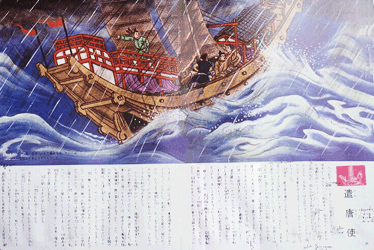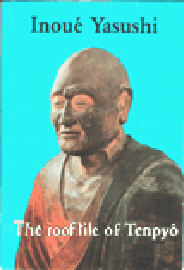Historical milestones - Japan
400/500
With the spread of Buddhism, Chinese characters were introduced to Japan via Korea.
630/894
During 14 missions, described in the Kentōshi "遣唐使", Japanese monk-students go to China to copy the Sutras, in order to spread the contents of the "God book" and its writing system once back home. This writing system is called Kanji (JI = charcacter, KAN = of the HAN dynasty).

Novel about the 9th mission. The blind monk Ganjin copied the Sutras to bring them back to Japan. (The Tōshōdai-ji has been built at Nara, to pay tribute to his memory)

794
Heian dynasty - 平安. From Kanji, two Japanese syllabaries are worked out :
- Hiragana - ひらがな originally reserved to women.
- Katakana - カタカナ used by monks to copy quickly the pronunciation of Sutras, Kata meaning "part of..".
- Hiragana - ひらがな originally reserved to women.
- Katakana - カタカナ used by monks to copy quickly the pronunciation of Sutras, Kata meaning "part of..".
1945
Drawing up of the list of 1850 "当用漢字", only Kanji to be able to be used without "translation" in Kana.
1981
95 Kanji are added to the 1850 list, their number reaching 1945 Kanji, with 4,000 reading. This list is called the Kanji "in common use - "常用漢字".
2010
196 Kanji are added to the list. The number of Kanji in common use amount to 2136, 2141 including the 5 that could be dropped.





